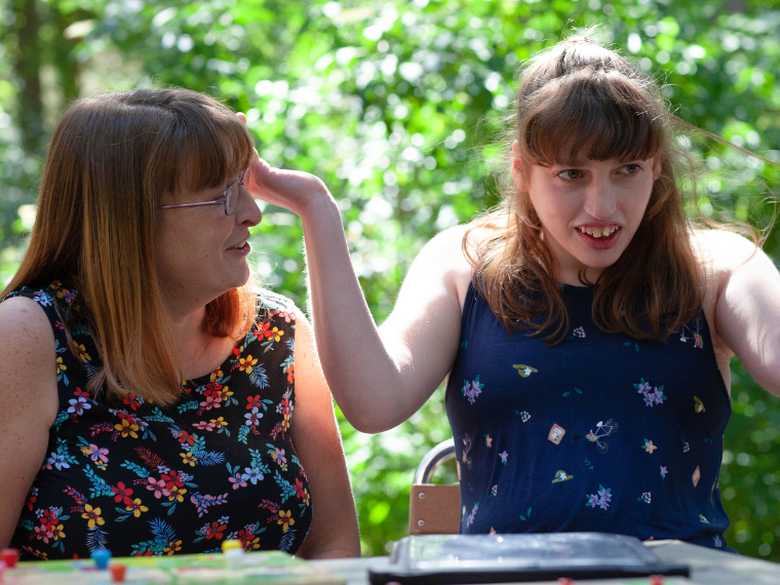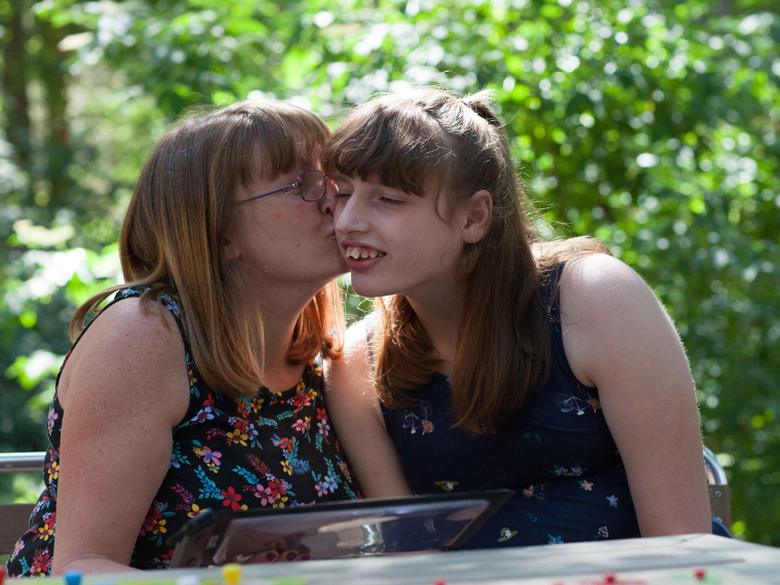Hannah
Hannah had her first seizure at aged 3 months old. Mum, Kelly, shares their story.
At 3 months old, when Hannah had her first seizure, the hospital said the cause was a water infection, the seizure was likely to be febrile and it may never happen again. But, at 5 months old, the seizures returned. From 6 months to 2 years old, Hannah’s seizures increased in frequency, type, length and severity.
Diagnosis
Hannah’s initial diagnosis was of childhood epilepsy. I joined the Epilepsy Action website forum, where I wrote about Hannah's journey and asked if anyone could offer advice. I wasn't convinced it was just epilepsy and sure enough, I was contacted by a parent who told me all about their child’s Dravet Syndrome diagnosis. Immediately, I googled it and every single sign and symptom was Hannah.
I rang the neurologist and he agreed she certainly fit the bill. Within the hour I’d taken her into the hospital for a blood test, which was sent away for gene testing. The neurologist started Hannah on Stiripentol straight away that day and said he would treat it as Dravet Syndrome. 16 long weeks later, the results came back confirming a gene mutation in Hannah’s SCN1A gene.
Yes, I had an answer but my whole world fell apart! I knew now that this childhood epilepsy was never going away. The following 6 months were awful - I cried a lot, got angry with the world and never really left the house with Hannah - the fear of SUDEP took over everything. I was definitely grieving for the little girl I was supposed to have. I joined every online epilepsy website, went on all the forums and read everything, which didn’t help. I was just scaring myself and I cut myself off from everyone.
Then, in the middle of crying one day, I looked at Hannah and thought this is ridiculous - all the tears in the world won’t help or fix Hannah - we are both missing out on life! We had to start to live and make lots of happy memories (plus, I looked ridiculous with red puffy eyes every day!)
Challenges
Hannah has an older brother, Thomas, who was also missing out on loads of things, which obviously wasn’t fair on him, so we started to make plans and move on with our new normal life. Obviously, some plans were abandoned on bad seizure days but generally we were in a much better place. I quickly learned not to put too much pressure on myself to commit to plans - if we got there then great, if not, so what? I also changed my mindset, yes Hannah has Dravet Syndrome but she is a lot more than that; first and foremost, she was a little girl, her medical problems were secondary.
Unfortunately, my friendship group changed a lot. I lost friends that didn’t get it, but gained some amazing ones that have helped me to get to where we are today.
Development
When Hannah was younger, she was a whirlwind. She never stopped and was always up to mischief. Once Hannah was on the right combination and dosages of medication, at about 3.5 years old, her personality and determination to do whatever she wanted began! If I hadn't taken photos of the havoc she caused, no one would have believed me.
Although the seizures continued, they got less frequent. Obviously, they were still scary and knocked her for six, but thankfully the hospital visits gradually reduced. I’m not naïve though, I know it can all change at any time and I certainly don’t take the good days for granted.
We have recently started to transition into adult services. Unfortunately, it comes with lots of meetings, report filling and being reminded of how far behind her peers Hannah is. But I've always been able to advocate well for her, so I see it as just another battle I will win!

Trying to find a post-19 provision suitable for Hannah is proving to be a challenge. She needs to be out and about, getting suitable therapies daily, so a day centre wouldn’t be suitable. At school she has 1-2-1 support, on a totally individualised timetable. It took some fighting for, but works so well for her. Our social worker has been given a list of things that Hannah needs, and that I want, so the battle continues. Funding is the biggest hurdle but I will not back down.
As Hannah has got older, her behaviours have changed - the climbing, running off, escape artist, Tasmanian devil days are almost a thing of the past. Her mobility has decreased, but mainly being lazy rather than medically, and she still makes her presence known.
Support from DSUK
Since Dravet Syndrome UK was formed it has been a great source of help and support. When Hannah was diagnosed there wasn’t a specific Dravet Syndrome focused group, so it has been lovely seeing this network grow.
We have been attending the Annual Family Weekend since the very first one and I’ve made the best of friends, who have girls around the same age as Hannah. This has been so important over the years, as I always know that they just totally get this craziness and no question is ever stupid! The private online forum for parent/carers is also a brilliant place to vent, ask questions and find loads of help for all aspects of life with Dravet Syndrome. The massive age range of kids and adults now diagnosed means that there is always someone with a helpful response.
A happy, loving, hilarious young lady
Hannah has totally changed my outlook on what is important in life. Dravet Syndrome is horrendous and I know how serious a condition it is but I definitely don’t let it rule Hannah’s life now. If I didn’t have a sense of humour about our life I would be in a very different dark place now.
How to sum up Hannah? Happy, loving, hilarious, wild. She’s hard work, but worth every tear, sleepless night and grey hair she has caused! She still loves swimming, horse riding, trampoline, playing connect 4, Jess Glynn songs and of course our girly holidays to Portugal. People consistently totally under estimate her; she watches everything and is always plotting how to get to the fridge for her next yoghurt! All she needs to do is smile and 99% of people melt and she gets her own way!

